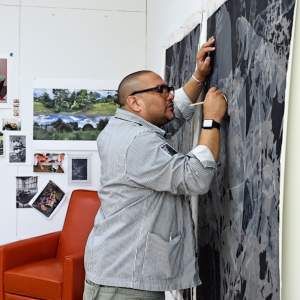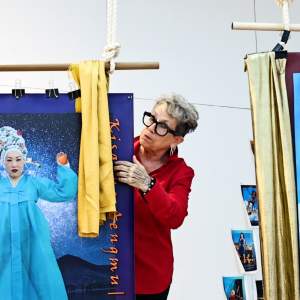Creating a Living Legacy: Henrietta Mantooth
Henrietta Mantooth

Can you share what has changed for you as a result of being a part of the CALL program?
Being part of CALL has brought new life to my studio. The discipline and enjoyment of bringing to light hundreds of works on paper and canvas with the companionship and expertise of Legacy Specialist Anne Polashenski helped to break the solitary endeavor which art making is in modern times.
In fact, I rediscovered my art. As I went through years of work of the past, I suddenly began to admire my own discipline and perseverance. Seeing the sense of adventure in my early work and knowing that art is about bravery, I asked myself: Am I still brave enough to be an artist? Of course the answer has to be yes.
In the first year of my work with CALL, I had a freak accident in which both my shoulder and my hip were seriously fractured and three surgeries followed within twelve months. During this time Anne continued activity in my studio, photographing and documenting the work we had separated. As soon as I got home we again dived into the job. Doctors, rehab and physical therapists put me back together medically. The Joan Mitchell Foundation’s CALL Program put me back together artistically.
Can you give us a sense of what needed to be accomplished when you started working with the CALL Program?
I respect chaos. D.H. Lawrence supposedly said, “Chaos is an order we don’t understand.” But survival is important and I was at the point of drowning on land, amid slides, photos and Xeroxes of paintings and drawings, and their originals, stacked up or piled around the studio along with found and fond objects and pieces of cloth and cardboard, newspaper clippings and other materials to be used hopefully in new work, plus an array of stray exhibit cards, applications sent or ignored, letters and papers. Plus all the paints, crayons, markers, charcoals, pastels, blank canvases and drawing pads. More work was scattered on shelves, tables, and the floor, in boxes or packed haphazardly into the unlabeled drawers of three large flat files. Locating specific work for exhibit, presentation or a studio visit meant a lot of effort and anxiety – a treasure hunt with no map except the hope that vague memory and intuition would kick in.
What has been the most rewarding aspect of this work?
All this has changed. Through the CALL process, I have been able to connect past with present. I have rediscovered my artistic history, which has energized my present work. Forgotten images -- ideas that I had meant to pursue -- have been unearthed and available for re-invention.
Also it is now possible to locate work by consulting the newly formed database on the computer which organizes my art by categories and precise description, and which can be found physically in the labeled flat files and storage areas. Large unstretched paintings on canvas and on paper have been carefully photographed, re-rolled, labeled and stored in precisely made boxes on high shelves. Besides these CALL procedures of creating a system, I made the important decision to hire a young artist assistant, Brittany Lynn, who loves order and has an instinct for creating it, and is able to give me an efficient clear picture of what to do next to achieve it.
What has been most difficult?
The only difficulty I have had with CALL is that it is soon ending in my studio. I am making an effort to prepare myself to continue this orderly process. I am working on understanding and utilizing the database to its full extent and hopefully creating for myself, new brain paths.
What do you recommend to artists who might be in the early stages of creating an inventorying system?
The fact that the archivist is an artist brings a special sensibility to the CALL Program. I recommend being present to work together as much as possible. Keep an open mind and look forward to changes in your physical studio as well as in your own attitude. Creating order allows you to look at your work as if you have never seen it before, which enlivens present creativity. It is a chance to see it as a whole and to recover ideas and experiences in making your particular kind of art. You can get a clear look at your own unique process and contribution. The best part of the CALL Program can be discovery and self-recognition.





